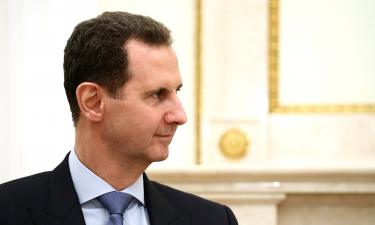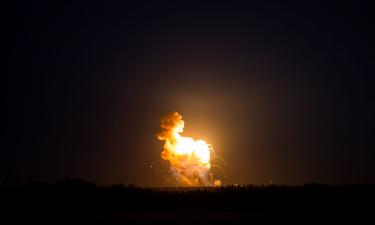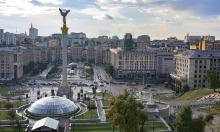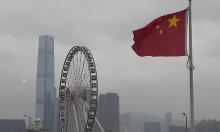Moscow Olympics in 1980 Sent Breath of Capitalism Behind Iron Curtain
July 19th marked 30 years since the opening day of the Summer Olympics in Moscow in 1980. This event not only changed the image of Moscow, but also the image of the entire country. Russia opened a window to Europe and the rest of the world, and was unable to shut it. Soon after the Olympics, the “Iron Curtain” collapsed, and we now live in a different country. During this time multiple documents reflecting the country’s preparation for the grand event were declassified. Now it turns out that, as usually, we were unaware of a great deal of facts about the Moscow Olympics.

1. Brezhnev wanted to turn down the Olympics
Moscow was granted the right to host the Olympic Games-80 in 1974 at the IOC session in Vienna. But a year later, General Secretary Leonid Brezhnev wrote a note to his future successor, Konstantin Chernenko: “It somehow happened that it was decided to hold the Olympics in the USSR. This event costs colossal amount of money. Maybe we should reconsider the issue and refuse to hold the Olympics [. . . ] I know that this will cause a lot of talks [. . .] the issue of the cost of the event is in the foreground. Some people suggested that there is a chance to refuse [. . . ] by paying a small fee as a fine. Besides the enormous cost [. . .] there may be all sorts of scandals that could tarnish the Soviet Union [. . .] I would like to know your opinion regarding this matter.”
Russia Today: Historama, July 19
This is a strange note. What causes this 180 degrees change of heart? One minute we fight for the Olympics, and the next we are ready to renounce it? Some historians see a manifestation of Brezhnev’s old-age related oddities in this note. But, most likely, the Secretary General was well aware that the economy was headed for disaster. It was a few years later than food was rationed in the Soviet Union.
2. An attempt to coax the German Chancellor with a Niva car
Fearing a provocation, the Soviet leaders on the eve of the Games organized a perfect occasion for an international scandal. This was a decision to send troops to Afghanistan, dated late December of 1979. Why it was not decided to bring them in six months later, after the Olympics, remains a mystery.
As a result, 64 countries led by the U.S. boycotted the Moscow Olympics. The USSR authorities tried to win over the countries that supported the boycott organized by the Americans until the last minutes by any means. For example, before the visit to Moscow of Chancellor Helmut Schmidt, the Politburo had a discussion regarding buying the politician’s loyalty at an incredible price, namely, by giving him a masterpiece of domestic car industry, Niva. Here is an excerpt from the transcript: “Brezhnev: I suggest giving Schmidt a passenger car Niva. The car features completely Soviet design and combines high cross-country ability and comfort of the interior. In Germany this car costs 16,000 marks, which is about 6,000 foreign currency rubles. Our wholesale price is 3,000 rubles. Schmidt has a cabin on the Kiel coast, where the roads are not very good. Schmidt's wife drives a car and studies marsh plants. I think, in this context he will be very pleased with this gift.”
Andropov: ”Niva is indeed a very good car. We presented it to the leaders of some countries, and they were very satisfied.”
The head of the country where Mercedes and BMW are assembled could not resist such a luxurious gift. However, German athletes did not refuse to participate in the boycott.
3. How much money did theUSSRmakeontheOlympics?
It is believed that the Moscow Olympics was the most unprofitable in the history of the Games, and that the organizers did not think about profits and did not count the money. It is not entirely true.
The exact budget of the Moscow Olympics is still unknown. Some named the figure of 2 billion rubles. But the actual number is probably larger. 1 billion 715 million rubles was spent on the construction of sports facilities, hotels, airports, food courts and roads alone. Another 150 million was spent on hosting athletes and guests. The budget of the Games in Sochi in 2014 will amount to 1.8 billion dollars. These numbers are incomparable since the money value is completely different now. Yet, the scale of spending is staggering in both cases.
4. Attempts to make Moscow a perfect city
In July of 1979, a classified top secret document was adopted. The document had a long title: “On the introduction of temporary restrictions on entry into Moscow during the Olympics-80 and sending Moscow and Moscow region residents off to construction teams, sports camps and other places of recreation in the summer of 1980.”
“In those days, the official documents used Aesopian language when things are not called their names, but everyone understands what they mean,” said Timur Jalilov, the lead specialist of the Russian State Archive of Contemporary History.
“In reality, there was an issue of not only vacations for Muscovites, but also the expulsion of undesirable elements from Moscow. Prostitutes, black market traders, beggars, criminals, and alcoholics were sent off beyond the 101th-km mark away from Moscow.”
Individual tourists from other cities of the USSR were denied entry to Moscow. The officials did not feel like feeding extra mouths in the midst of the food crisis.
5. Capitalist Adidas made uniforms for Russian athletes
Along with the Olympics, many items of the so-called bourgeois life came to the USSR from behind the Iron Curtain and settled there. Soviet consumer not spoiled by abundance, discovered coca-cola, ketchup, chewing gum, disposable plastic utensils and sneakers.
Uniforms for the Soviet team were made by famous German company Adidas. However, the party leadership prohibited placing labels of capitalist companies on the athletes’ outfits. As a result, the traditional three Adidas stripes were replaced by one red stripe. The parties reached a compromise regarding the design of sneakers. The three stripes on the sides remained, but the way they were placed resembled the letter M, emphasizing that the Olympics were held in Moscow. And, although the company name did not appear on clothing, shoes and sportswear, Adidas became wildly popular in the Soviet Union.
6. Foreigners paid an arm and a leg for their tickets
While determining the prices, the authorities were guided by the experience of the Munich and Montreal Olympics in 1972 and 1976. The tickets there were priced from 2 to 30 foreign currency rubles. The Soviet Union decided to make a range from 2 to 25 rubles (a bit cheaper than capitalists).
However, a 70% discount on tickets was established for the citizens of the USSR. For example, if a foreigner paid from 6 to 25 rubles for a ticket to the opening and closing ceremonies, the Soviet fans could purchase the cheapest seats for 1.80 and most expensive for 7.50 rubles. Special thanks to the Federal Archive Agency and personally Timur Jalilov for the assistance with this article.
Komsomolskaya Pravda
Subscribe to Pravda.Ru Telegram channel, Facebook, RSS!





